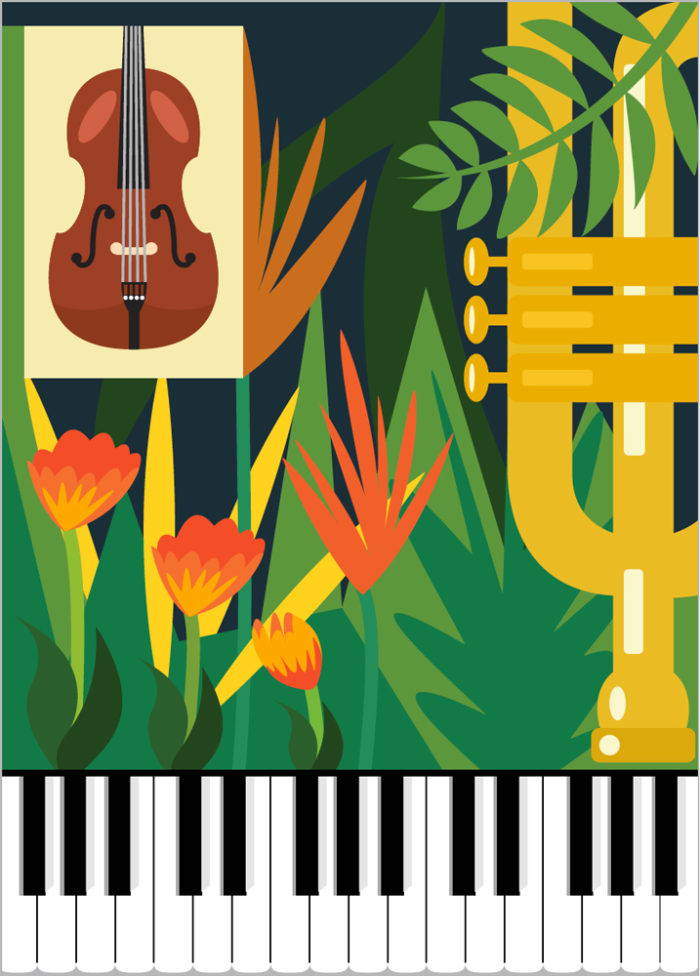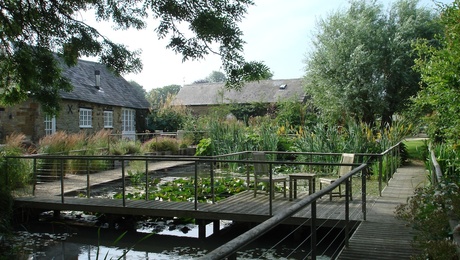
One night my partner put on some Thelonious Monk for dinner music. Now I like dinner and I like music, but some forms of jazz at dinner jangle my digestion. The demands of jazz draw me away from the pleasures of a meal. I have a hard time “drowning it out.” I decided at that moment, “I don’t like jazz,” though I kept that thought to myself.
Not so long after that, at a client’s garden party, a guest, loaded with as much gin as I was, would not stop pestering me. “What sort of garden is this anyway?” he asked. “I mean, what do you call this style of gardening?” I had no answer. I had never really thought about a style of gardening. My client had requested an English garden. I interpreted his wishes by creating lush and colorful mixed borders in the open woodland setting that included annuals and perennials, shrubs and vines, trees and bulbs. I used any and every color, deliberately creating a dissonant effect but then easing it all with a melodious suite of soft and harmonious hues. I actually had no idea what I was doing.
“English mixed borders?” I guessed, unconvincingly.
“No,” my gin-drinking buddy continued, “that’s too stuffy. This is not a stuffy garden at all.”
I staggered through the process of making this garden in /my mind, looking for an answer. I had never actually seen an English garden. I had grabbed from every direction I could, including places where I had been: the Italian countryside, the German naturalistic gardens of Cologne, the lush annual plantings of the Missouri Botanical Garden, even the Sonoran Desert. I was a collagist at heart, a surrealist. But I found no answer. The guest only got more inflamed the vaguer I got. If I couldn’t supply an answer, he would.
“Jazz!”
Obviously, he had a better handle on the gin than I did. He was suddenly clear and confident in his assessment.
“That’s it! It’s like jazz!”
Jazz is not my favorite kind of music, as you now know. It’s too complex, too sophisticated, too demanding for my tastes. But here was someone I had met for the first time calling my style of gardening “jazz”!
And he was right.
As I looked around with this emphatic word “jazz” bumping against the gin in my head, I could see the complexity and the brainy sophistication in the borders. I could see his point.
I love syncopation. I love setting up a rhythm and breaking it. I love to free associate, to improvise. It’s probably why I found so much pleasure in collage for years.
It’s so easy to think of gardening as a visual art form. One of the greatest pleasures of gardens, of course, is looking at them. Yet as I stood with my client’s friend on that quarter-acre of lawn surrounded by those crazy mixed borders, I began to see, more and more, the musicality of gardens. I’m not talking about the rustling of leaves in the wind, or songbirds’ warblings. Gardens take place in time and work intently with interpreting time, as does music. I am convinced that a garden needs rhythm, syncopation, harmony, and even dissonance, dear Mr. Monk.
And, yes, that’s jazz.
I probably like jazz more than admit. After all, I couldn’t live without Ella Fitzgerald or Keith Jarrett, Pat Metheny or Betty Carter.
I guess I’d rather boogie than march—and my gardens do the same.
—Daniel Mount writes and gardens in Carnation, Washington.
From Fine Gardening #194

















Comments
Log in or create an account to post a comment.
Sign up Log in